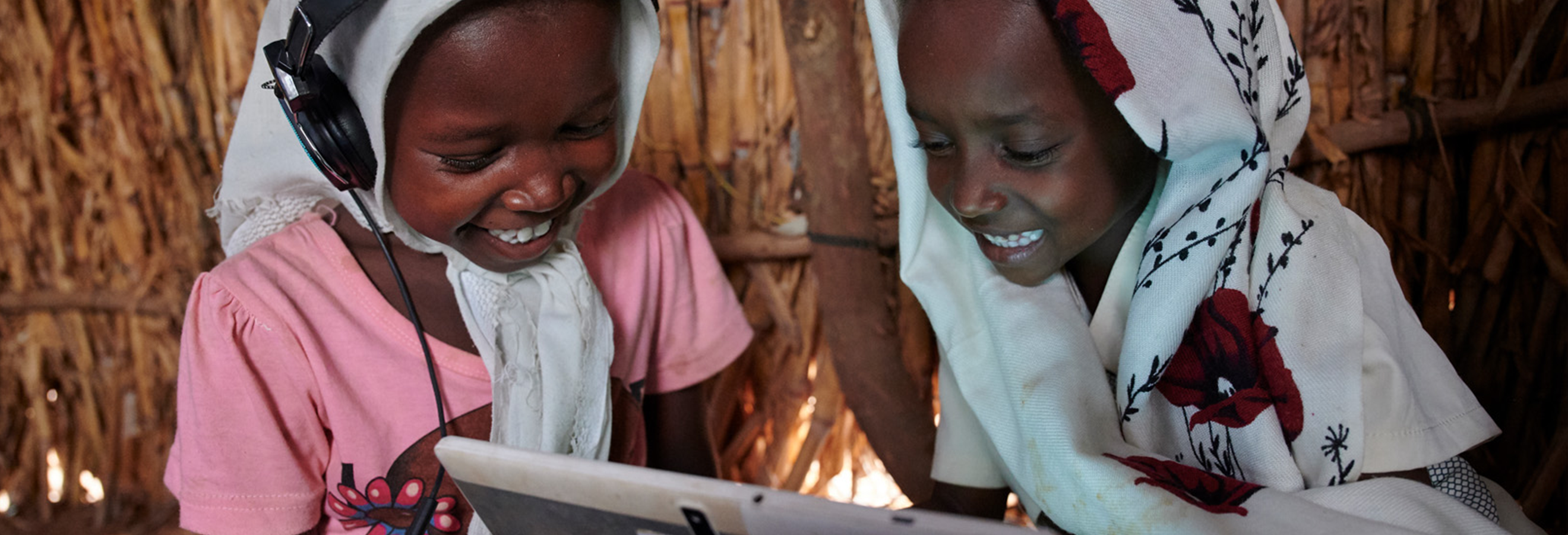
Assuring and improving quality public digital learning for all
We must harness the power of the digital revolution to ensure quality education is provided as a public good and a human right, with a particular focus on the most marginalised. This has been affirmed by the Secretary General’s Our Common Agenda, the United Nations Secretary-General’s Roadmap for Digital Cooperation, the Sustainable Development Agenda, the Transforming Education Summit process, the Global RewirEd Declaration on Connectivity for Education, and the International Commission on the Futures of Education.
We must marshal the strengths of digital technology to advance our national and international aspirations for education and lifelong learning. Such action will help catalyze beneficial transformations to various aspects of education, including pedagogy, curriculum, assessment, social caring and the organization of learning, both in and outside of formal educational institutions. It will further help improve student learning outcomes, thereby better ensuring that all those who access education, whether children, youth, or adults, acquire foundational literacy skills, develop knowledge and competencies relevant to their lives and livelihoods, and contribute to more sustainable futures.
We must use three keys to unlock the power of digital teaching and learning, making it more universally accessible and a more reliable pillar of holistic educational experiences:
Digital learning platforms with high quality content can transform learning for children, youth and adults. The experience of the COVID-19 educational disruption revealed that large numbers of learners do not know where to go or have nowhere to go to access digital education resources to pursue their studies, needs and interests. In many instances, content that does exist has not been quality assured, is inaccessible on mobile phones, is poorly organized, or resides behind paywalls or in virtual spaces that inappropriately capture and sell student data and expose learners to advertising. A recent review of over 150 ed-tech products found that close to 90 per cent were engaged in data practices that risked or infringed on children’s rights. Too many countries still have no publicly sanctioned platforms and content for digital learning.
Capacity development is needed to enable evidence-based approaches to effective digital learning which will provide benefits well beyond academic outcomes. Across the world a lack of digital skills ranks among the most commonly cited barriers to using the internet for education and other purposes, often eclipsing even barriers of cost. One in three people lack even the most basic digital skills, and even for those who have digital skills, very little training is available to teachers to enhance their pedagogical practices for using technology effectively. Moreover, gender gaps in digital skills remain unacceptably high. Women and girls are 25 per cent less likely than men to know how to leverage digital technology for basic purposes.
Connectivity provides a vital pathway to digital learning. Globally however, 2.9 billion people are still offline, 90 per cent of whom live in developing countries. In addition, there are significant differences in internet affordability worldwide such that the poorest people often have the most expensive mobile data fees. Due largely to access and cost differentials, people in wealthy countries use, on average, 35 times more digital data than people in poorer countries. This inequity in access to connectivity narrows opportunities for far too many young people and adults to learn and fulfil their potential.
We will establish national strategies and budgets with short, medium, and long-term targets, to advance progress across all three keys, in order to unlock the power of digital learning. These strategies will actualize the following commitments:
Content
- We commit to establishing and iteratively improving public digital learning platforms with high quality, curriculum-aligned education resources, ensuring they are free, open and accessible for all, in line with UNESCO’s Recommendation on Open Educational Resources, while also protecting the privacy, safety and data security of users. We will work to advance progress towards this commitment through the ‘Gateways to Public Digital Learning’ multi-partner initiative launched at the Transforming Education Summit.
- We commit to ensuring these platforms empower teachers, learners, and families, support accessibility and sharing of content, and meet the diverse needs of users, including learners with disabilities, speakers of minority languages, girls and women, as well as refugees and people on the move.
Capacity
- We commit to achieving universal digital literacy for education and other empowering purposes with a special focus on women and girls in order to close longstanding digital skills gender divides.
- We commit to building the capacity of all teachers and relevant education personnel so they can harness the power of digital resources to support their students to learn, leveraging existing tools and alliances including the UNESCO ICT Competency Framework for Teachers and the Global Education Coalition.
Connectivity
- We commit to connecting every school to the internet, and to facilitating the extension of internet services to households and individuals in order to provide additional avenues to education and lifelong learning.
- We commit to adopting a whole-of-government approach and leveraging existing initiatives, such as Giga (UNICEF and ITU), to implement the policies, regulations, technologies, and financing required to ensure that school connectivity is safe, sustainable, and equitable.
Underlying all of these commitments is our resolve to prioritize marginalized learners, teachers, and families. Too often, connectivity and technology benefit privileged learners and educators first or exclusively. This mirrors and often widens educational inequity, creating further disadvantages for refugees, learners with disabilities, girls and women, remote communities, and other marginalized learners. To ensure that digital learning helps close educational divides, we will work to recalibrate our policies, actions, and investments to center those most in need of opportunities.

